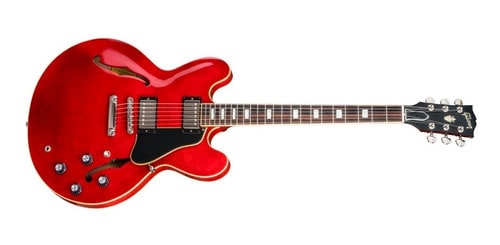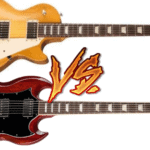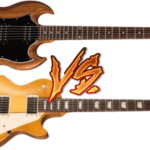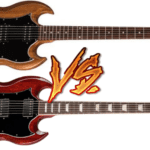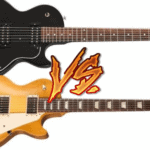Let’s say what not many dare to say: Numbered models are a pain…
At least until you understand the logic behind the system.
But still, if you don’t keep that knowledge fresh in your head it won’t take long until you start getting it all mixed over again.
We all think we know what a 335 is, but what makes it different from a 345 or a 355?
We’re here to help you with that.
The Gibson 335 is the all-time classic. The 339 is a scaled-down in size version of the 335. The 345 is a higher-end version of the 335 which came with a Varitone switch in older models. The 355 is a luxury version of the 335. The 359 is a higher-end version of the 339.
In this article, we’re gonna layout first the main characteristics of every one of these models, and then we’ll put them side to side so you can see what makes them unique.
After that, we will give you some advice on which one you should get based on their features if you’re looking for one.
Let’s get started!
Gibson 335 main characteristics
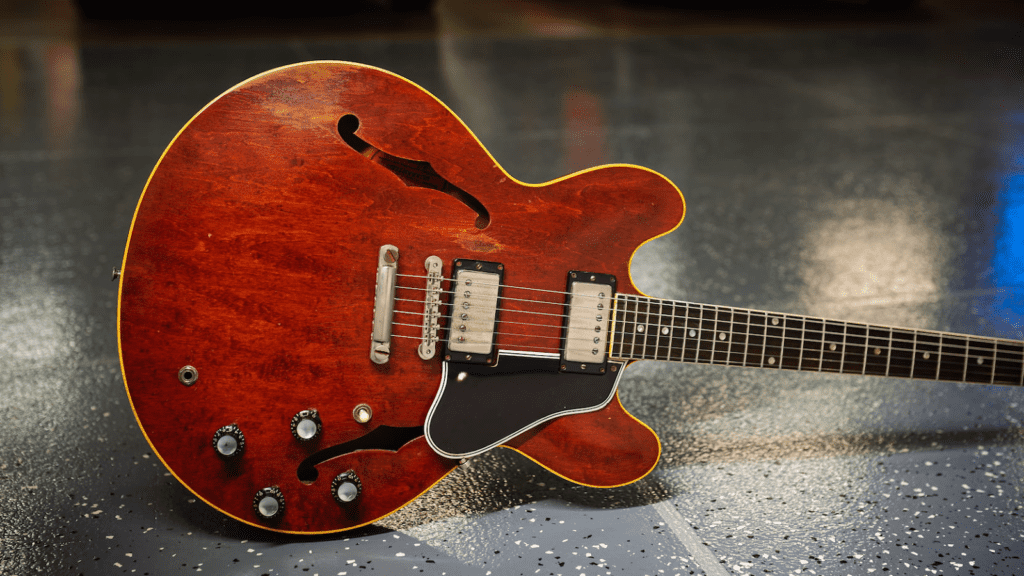
The 335 is one of Gibson’s flagship instruments. It was introduced in 1958 and it’s still as amazing as the first day.
It has a semi-hollow body with a maple center block, two humbucker pickups, a mahogany neck, and a rosewood fretboard.
You don’t need more than that. Trust me.
It has been for decades the weapon of choice for many of the most renowned blues, jazz, and rock guitar players. And that might tell you something about it.
Here are some of the features that define the 335’s sound:
| Specs | Gibson 335 |
| Body wood | 3-ply Maple/Poplar/Maple |
| Scale length | 24.75″ |
| Neck wood | Mahogany |
| Neck profile | Rounded “C” |
| Fretboard | Rosewood |
| Pickups | Calibrated T-Type |
| Controls | 2 volumes, 2 tones, 1 toggle switch, hand-wired with 500K potentiometers and orange drop capacitors |
| Tuners | Vintage Deluxe w/ Keystone Buttons |
| Body size | Normal size |
Gibson 339 main characteristics
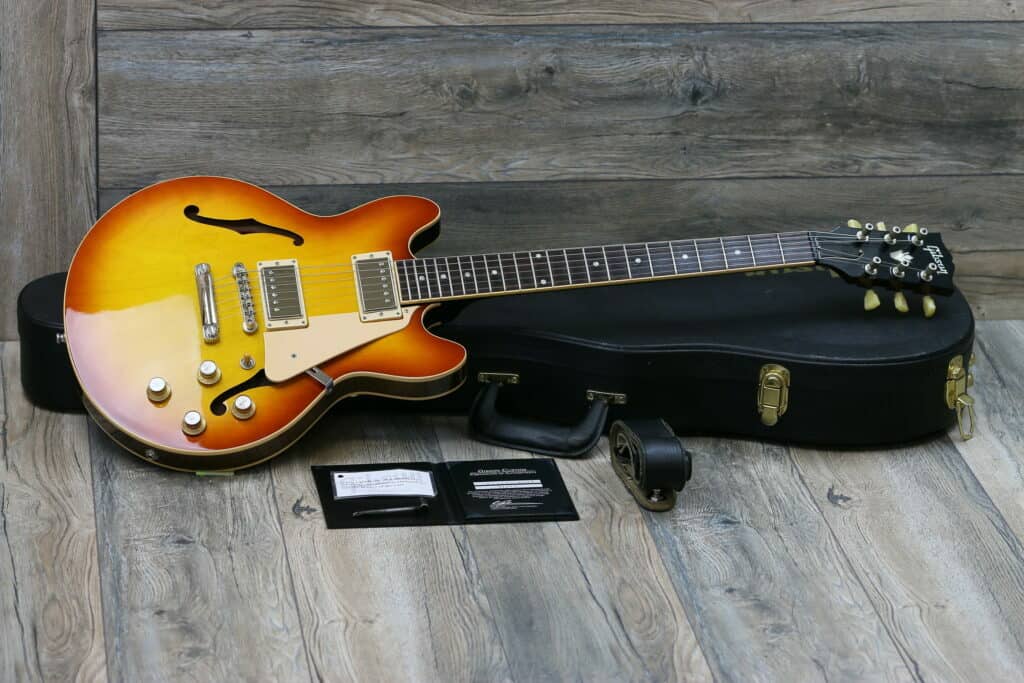
The 339 is actually a downsized 335.
Yes, exactly that. Gibson also says it.
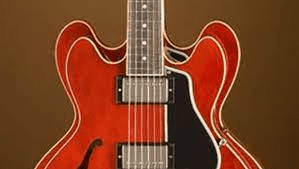
It was first introduced in 2007 and made many players gravitate toward it.
Does the difference in size affect tone? Well, most likely.
Is that good or bad? You decide. A lot of people just prefer it for its more practical, less bulky dimensions and that’s it.
The features of the 339 are as follows:
| Specs | Gibson 339 |
| Body wood | 3-ply Maple/Poplar/Maple |
| Scale length | 24.75″ |
| Neck wood | Mahogany |
| Neck profile | Rounded “C” |
| Fretboard | Rosewood |
| Pickups | 57 Classic, 57 Classic + |
| Controls | 2 Volumes, 2 Tones & Toggle Switch |
| Tuners | Grover Rotomatics w/ Kidney Buttons |
| Body size | Reduced size |
Gibson 345 main characteristics
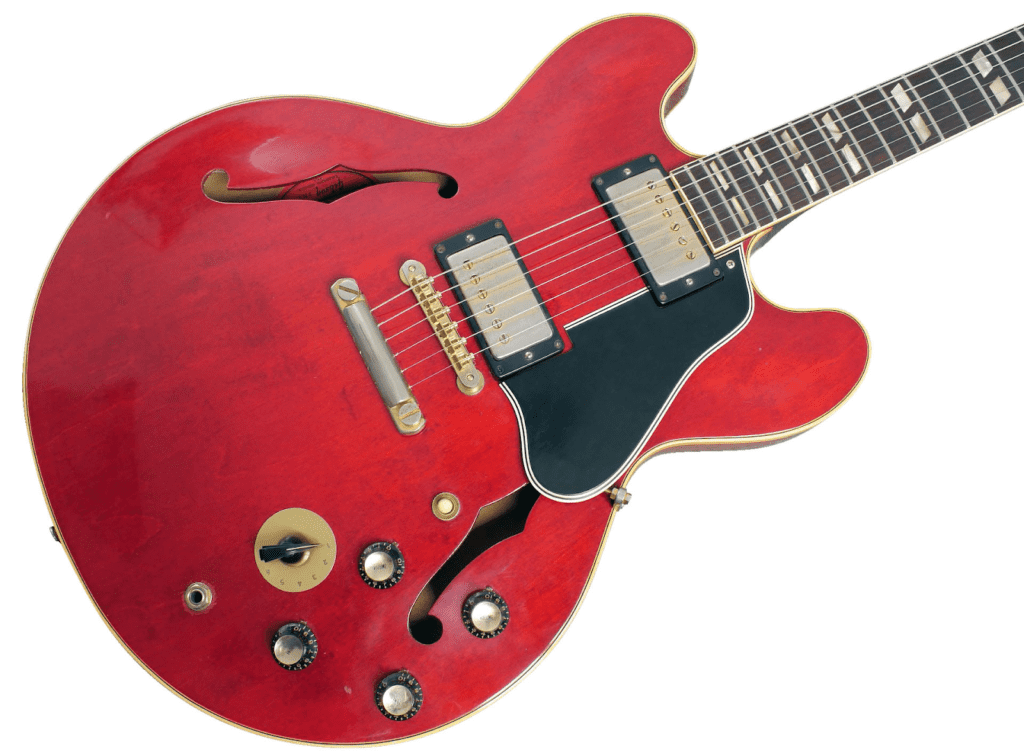
The 345 is contemporary to the 335. Its first iteration came in 1958, the same year as its predecessor.
It’s pretty similar to the 335, but it’s was sought as an upscaled version, in terms of aesthetics and some features.
Many things have changed in this model over the years, but its main characteristic was the incorporation of a “Varitone” switch that helped players achieve sounds that the 335 wasn’t capable of.
Also, there were, and there are aesthetic differences such as the headstock decoration and the inlays.
Here are the current version’s specs for the 345
| Specs | Gibson 345 |
| Body wood | 3-ply Maple/Poplar/Maple |
| Scale length | 24.75″ |
| Neck wood | Mahogany |
| Neck profile | Rounded “C” |
| Fretboard | Rosewood |
| Pickups | Calibrated T-Type |
| Controls | 2 Volumes, 1 Tone & Toggle Switch (Hand-wired with Orange Drop Capacitors) |
| Tuners | Vintage Deluxe w/ Keystone Buttons |
| Body size | Normal size |
Gibson 355 main characteristics
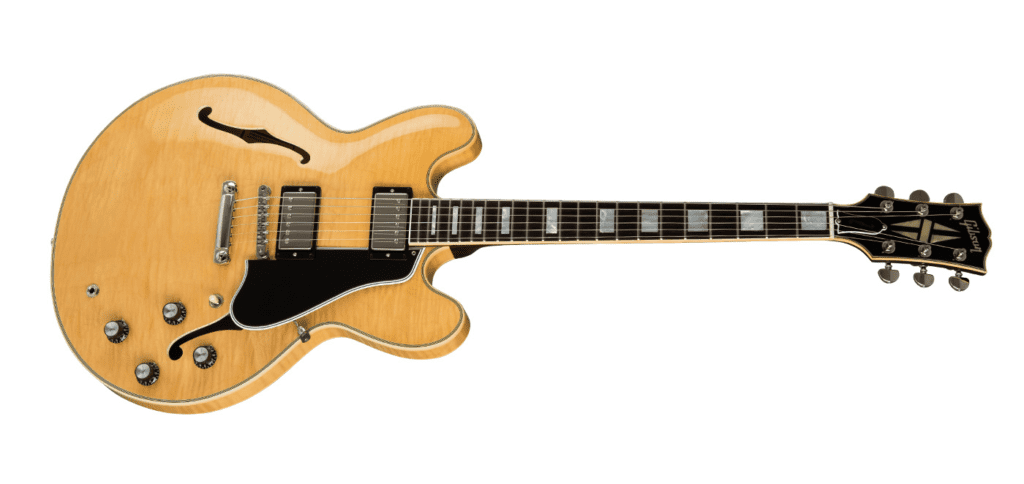
This one is all about luxury.
If you’re looking for the Rolls-Royce of semi-hollow Gibsons. The 355 is the one for you.
There are no fundamental features that make it a different instrument, in theory, from the 335, but it has many things to set them apart.
Particularly, it sports an ebony fretboard and many other visual upgrades from the 335.
It also has custom pickups alongside custom electronics and a historically accurate ‘59 neck profile.
The features of the current version of the 355 are the following:
| Specs | Gibson 355 |
| Body wood | 3-ply Maple/Poplar/Maple |
| Scale length | 24.75″ |
| Neck wood | Mahogany |
| Neck profile | Authentic ’59 Medium C-Shape |
| Fretboard | Solid Ebony |
| Pickups | Custombucker Alnico 3 (Unpotted) |
| Controls | 2 Volume, 2 Tone; CTS® 500 k Audio Taper Potentiometers, Paper-in-Oil Capacitors |
| Tuners | Kluson Waffleback with Pearloid Tips |
| Body size | Normal size |
Gibson 359 main characteristics
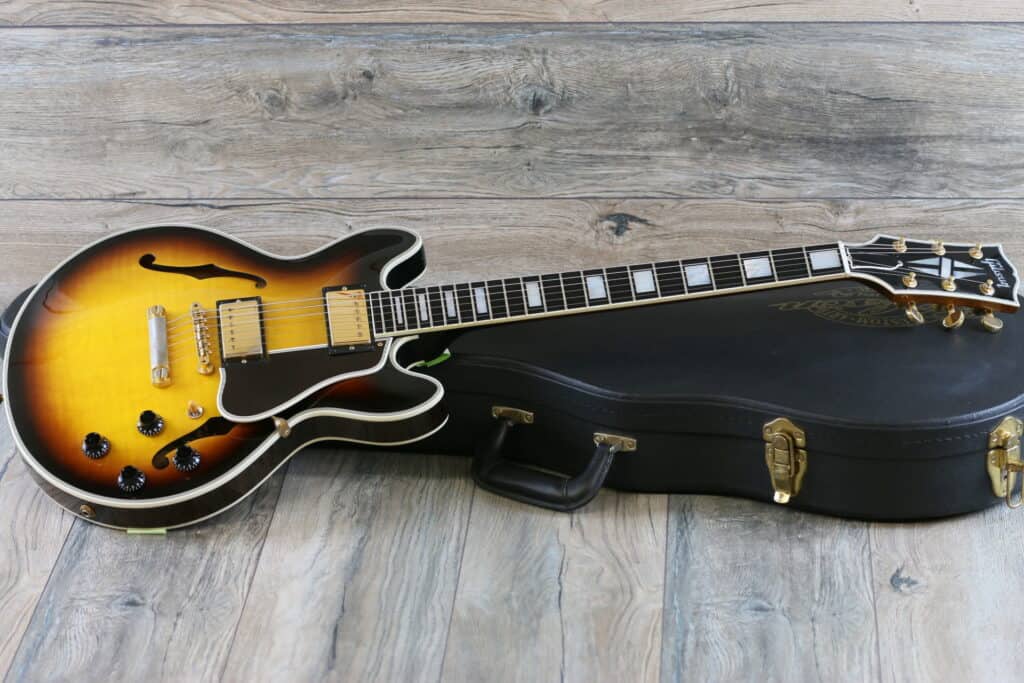
The Gibson 359 is a higher-end version of the 339. It was first introduced in 2008, a year after its most comparable counterpart.
Aside from the usual eye-catching upgrades. Many versions of this guitar came with ebony fretboards, which makes them very attractive for some musicians.
It is to the 339 what the 345 is to the 335. And that was a mouthful, but you get me, right?
These are the specs that define a 359:
| Specs | Gibson 359 |
| Body wood | 3-ply Maple/Poplar/Maple |
| Scale length | 24.75″ |
| Neck wood | Mahogany |
| Neck profile | 30/60 slender neck profile |
| Fretboard | Ebony |
| Pickups | ’57 Classic |
| Controls | 2 Volume, 2 Tone, 3-way toggle with Memphis Tone Circuit |
| Tuners | Vintage Deluxe w/ Keystone Buttons |
| Body size | Reduced size |
Main differences between the Gibson 335, 339, 345, 355 & 359
Now it’s time to make things clearer. Although this table might look a bit crowded, we added a one-liner description at the bottom of it so you could get a quick intuition for the concept of each model.
These specs are not set in stone and have changed greatly over the years. Well, we’re sure that they even changed within months in the first years of their production cycle.
We didn’t go into qualitative characteristics because of their subjectiveness, so we encourage you to play every single one of these if it’s within your reach, to see what these small differences develop into soundwise.
Also, we know that many features are not different, but we wanted to show that the common denominator here is the similarities and not the differences, although they exist.
Let’s see every one of these models side to side:
| Specs | Gibson 335 | Gibson 339 | Gibson 345 | Gibson 355 | Gibson 359 |
| Body wood | 3-ply Maple/Poplar/Maple | 3-ply Maple/Poplar/Maple | 3-ply Maple/Poplar/Maple | 3-ply Maple/Poplar/Maple | 3-ply Maple/Poplar/Maple |
| Scale length | 24.75″ | 24.75″ | 24.75″ | 24.75″ | 24.75″ |
| Neck wood | Mahogany | Mahogany | Mahogany | Mahogany | Mahogany |
| Neck profile | Rounded “C” | Rounded “C” | Rounded “C” | Authentic ’59 Medium C-Shape | 30/60 slender neck profile |
| Fretboard | Rosewood | Rosewood | Rosewood | Solid Ebony | Ebony |
| Pickups | Calibrated T-Type | 57 Classic, 57 Classic + | Calibrated T-Type | Custombucker Alnico 3 (Unpotted) | ’57 Classic |
| Controls | 2 volumes, 2 tones, 1 toggle switch, hand-wired with 500K potentiometers, and orange drop capacitors | 2 Volumes, 2 Tones & Toggle Switch | 2 volumes, 2 tones, 1 toggle switch, hand-wired with 500K potentiometers, and orange drop capacitors. Older models include a Varitone switch | 2 Volume, 2 Tone; CTS® 500 k Audio Taper Potentiometers, Paper-in-Oil Capacitors | 2 Volume, 2 Tone, 3-way toggle with Memphis Tone Circuit |
| Tuners | Vintage Deluxe w/ Keystone Buttons | Grover Rotomatics w/ Kidney Buttons | Vintage Deluxe w/ Keystone Buttons | Kluson Waffleback with Pearloid Tips | Vintage Deluxe w/ Keystone Buttons |
| Body size | Normal size | Reduced size | Normal size | Normal size | Reduced size |
| One-line description | Classic | Smaller 335 | Higher-end 335 | Luxury 335 | Higher-end 339 |
Which one should you choose?
Here at GearAficionado, we don’t usually make final recommendations about a piece of gear.
We know every musician has their unique needs and this is a great example of it.
Any of these guitars is excellent, with little margin to doubt it. The thing that makes them special for you should be your deciding factor.
Again, we encourage you, if it is possible, to go try them, or as many of them as your nearby guitar store has in stock, side by side, and feel their uniqueness personally.
If you still wanna read some of our insights about what might work for you, here they are:
- If you are not a big guy, try the 339
- If you want the original experience, go for the 335
- If you like the aesthetics better or you’d like to experiment with a Varitone, choose the 345
- If you prefer a Les Paul sized guitar and you’re into ebony fretboards, go get a 359
- If you’re a millionaire and money is just an anecdote for you, order a 355 online

Hello there, my name is Ramiro and I’ve been playing guitar for almost 20 years. I’m obsessed with everything gear-related and I thought it might be worth sharing it. From guitars, pedals, amps, and synths to studio gear and production tips, I hope you find what I post here useful, and I’ll try my best to keep it entertaining also.

